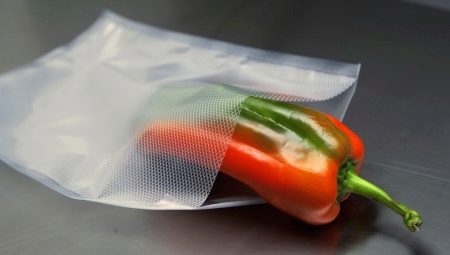The issue of long-term preservation of freshness of products is relevant for companies involved in their production and sale, and for economical housewives. Today vacuum packages perfectly cope with this task. Every day the assortment of such products expands, so you should understand their features and varieties.
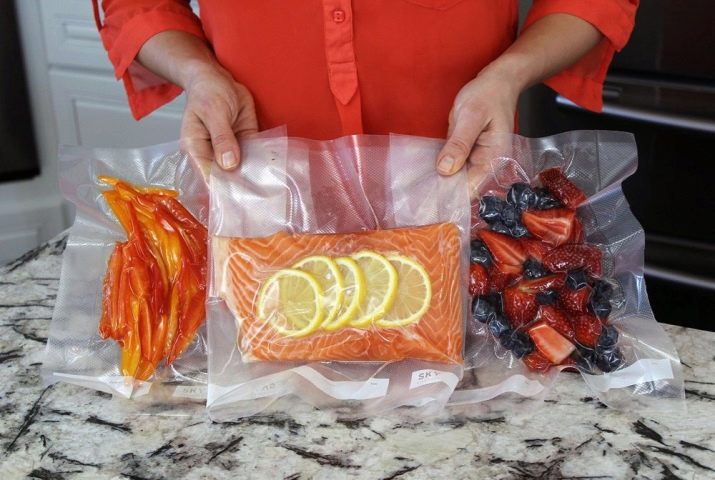
What it is?
Any vacuum packaging for food products operates on the same principle. Inside, an airless space is created. Exactly lack of oxygen minimizes the activity of dangerous bacteria, prevents the processes of fermentation, decay, the appearance of fungi.
The fact is that the development of such negative processes requires special conditions (humidity, light, air). In a vacuum, a completely different atmosphere is created, excluding the presence of factors leading to rapid spoilage of food.
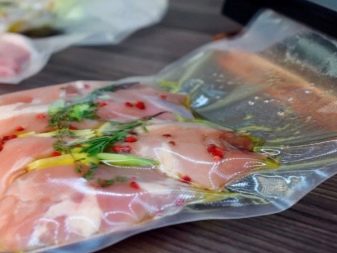

As a result, the shelf life of food products increases, their freshness, aroma, attractive appearance and benefits to the human body are preserved.
Creating a vacuum usually occurs under the influence of special machines. Manual air bleeding with a pump is also possible. As a result, the film, as it were, encircles the contents, protecting it not only from quick spoilage, but also from external influences, which is useful both in conditions of selling products and in everyday life.
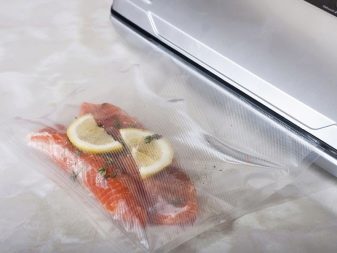
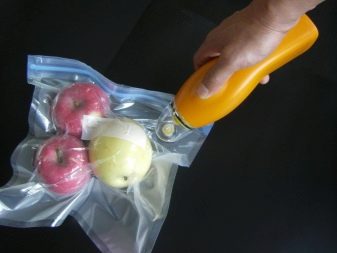
Advantages and disadvantages
Considered food storage method has a lot of advantages.
- Food stays fresh for a long time, even if they cannot (or not possible) be placed in the refrigerator.
- The original consistency is preserved. (juiciness, softness or hardness). Slowing down processes, drying.
- Foreign odor protection becomes important when storing different fragrant products together.
- Hygiene Complied when transporting food from suppliers, its storage in warehouses, at points of sale. The contents of the packages are isolated from dirt, dust, dampness, which is also convenient when traveling to the country, picnic, and a long stay on the train.
- Sealed packaging looks goodthat allows you to maintain the aesthetics of the assortment in the store. At the same time, the packages are transparent, due to which a person can visually evaluate the contents before buying.
- Since vacuum increases the compactness of food packages, space is saved in the refrigerator and on the shelves of outlets.
- This storage method allows you to divide food into portions., store vegetables in the form of slices.
- Ability to stay fit for longer to use contributes to saving money, since you do not have to throw away spoiled products.
- The principle of vacuum packaging is quite simple. It does not require special skills, so it is great for use at home.
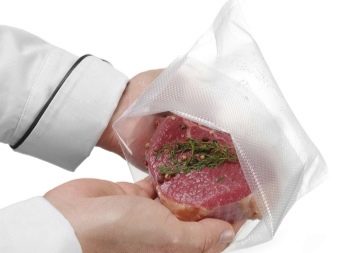
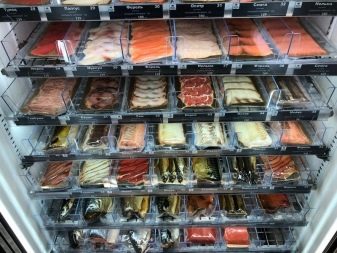
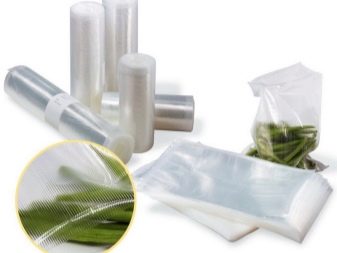
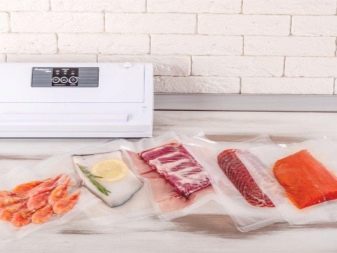
However, despite the many advantages, sealed packaging also has disadvantages.
- Low degree of protection against mechanical stress. Unlike containers, bags are not too durable.
- The likelihood of content taste changing. Despite being protected from external odors, the vacuum itself can sometimes reduce palatability.
- Possible bonding. If you pack several units of a product with an oily surface in one bag (for example, sliced pieces of cheese), they can stick to each other.
- Inability to protect food from all existing bacteria. Anaerobic species can develop even in airless space.
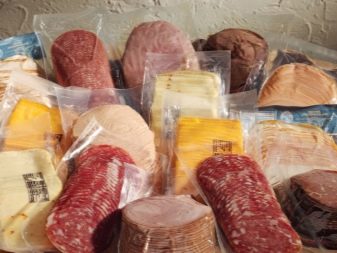
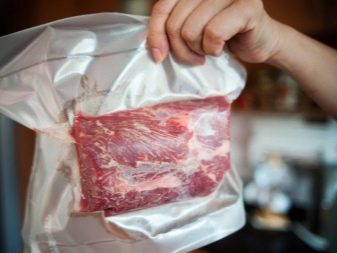
Kinds
Vacuum bags are used both in industry and in everyday life. Depending on this, they are of two main types.
Industrial
In industry, special chamber packing machines. In this case, each product along with the package is placed in a special chamber. First, air is pumped out of the chamber. Then it is removed from the packaging. This ensures reliable sealing. As well as installations have the ability to glue the film. At the end of the process, the bag is sealed, which allows you to save airless space inside.
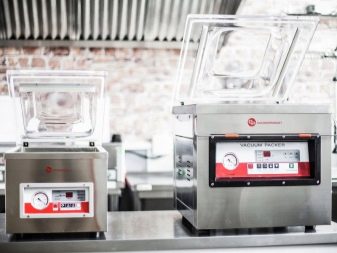

The second type of popular industrial equipment is thermoforming machines. In this case, the film covers the product lying on the substrate. Cameras are not used here.
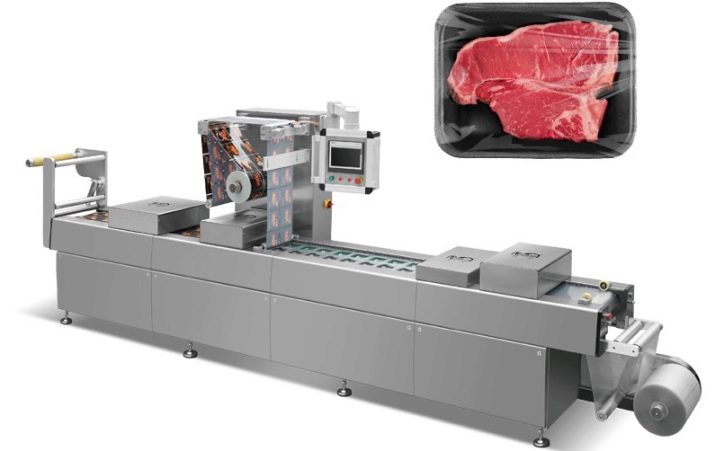
Household
Options for sealed bags used in everyday life are more diverse. Allocate as disposable and reusable bags for storing and freezing food. And also products differ in the type of film used.
The most popular inexpensive materials: lavsan, polyester, polyethylene.
Multilayer polymer options are also used. At the same time, packages can be standard, shrink, corrugated, metallized.
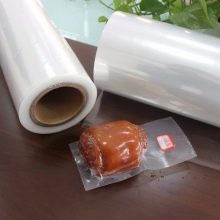
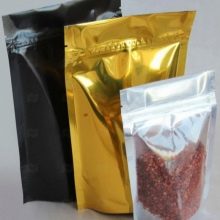
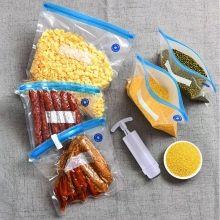
Different packaging methods. In domestic conditions, tubeless devices are more often used. In this case, the bag is located outside the device. However, models without cameras, in turn, are also divided into several varieties. There are options with pump, valve and clasp. And also there are models with automated air removal and soldering function.
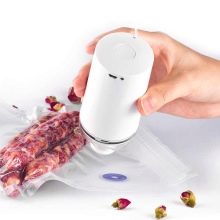
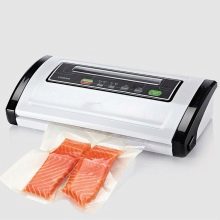

Home appliances can have a whole range of different modes:
- for soft or hard products (the choice affects the air removal rate, on which the preservation of the shape of the contents depends);
- for liquid or solid products (this determines the rate of sealing, which in the first case will be higher);
- transition to manual control (allows you to adjust the process of pumping air, to receive partial sealing);
- the possibility of soldering without eliminating air;
- pickling (phased air removal);
- remembering the previous mode.
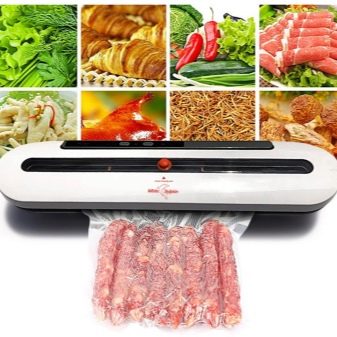
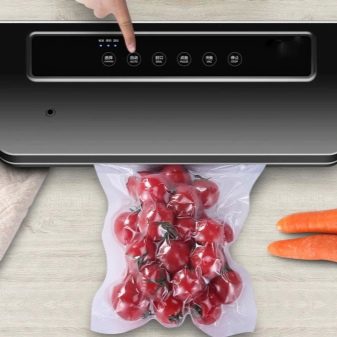
Dimensions
Vacuum bag options may vary.The minimum length is 160 mm and the width is 110 mm. As for the maximum sizes, then for domestic needs, products wider than 300 mm are usually not taken. This is enough for most products. However, there are also options for sale with a width of up to 450 mm and a length of up to 300 mm.
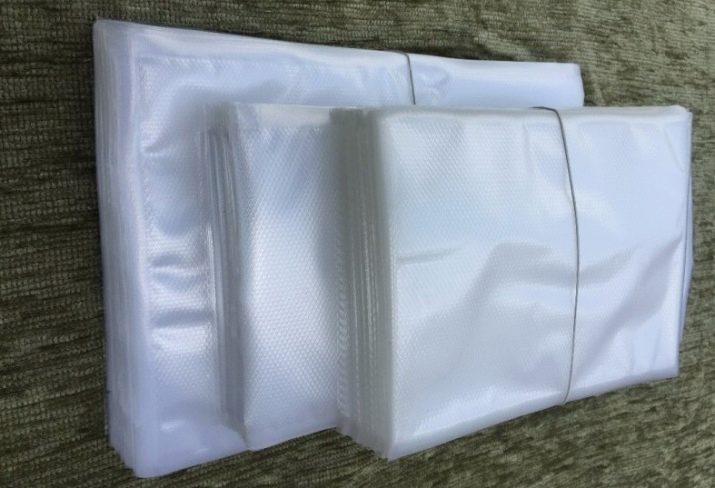
How to use?
First of all, it is important to remember the basic conditions that guarantee the quality of food safety in sealed packaging:
- Only vacuum clean and fresh foods.
- if the product is hot, be sure to wait for it to cool before sealing;
- follow the recommended storage temperature (something needs to be stored in the refrigerator, but something, on the contrary, at room temperature);
- Use packages suitable for your particular packer model.
- avoid punctures and other damage to the film;
- Do not store bags containing contents in bright light or in high humidity.
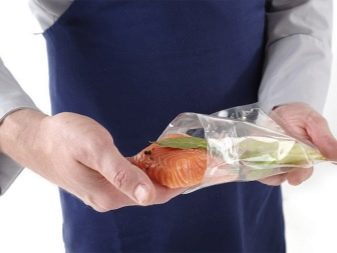

Now consider the packaging process itself. Only if everything is done correctly can you create an absolute vacuum.
- Prepare the products (wash them if necessary).
- Take the bag (unwind it from the roll and solder one edge, if this option is used).
- Put the product inside.
- Insert the other end into the instrument and press the appropriate button. Sealing and sealing of the second edge of the bag will occur.
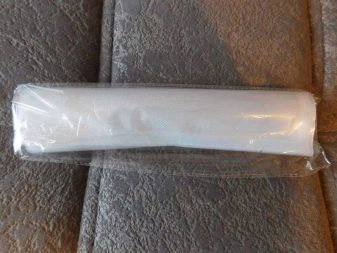
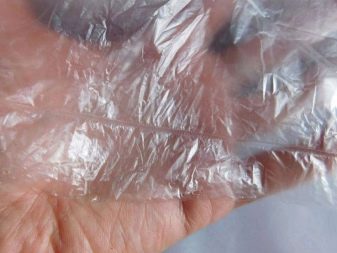
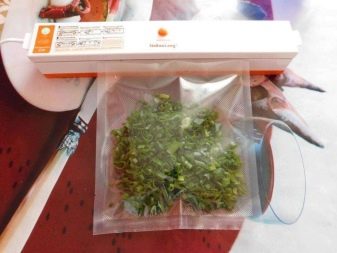
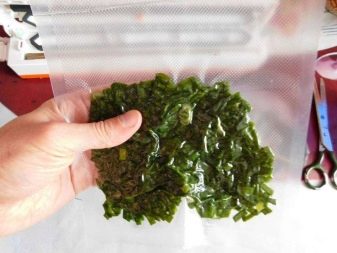
Shelf life
Sealing prolongs the freshness of food, but not indefinitely. However, different products have different storage periods, even in vacuum packaging. This should be considered.
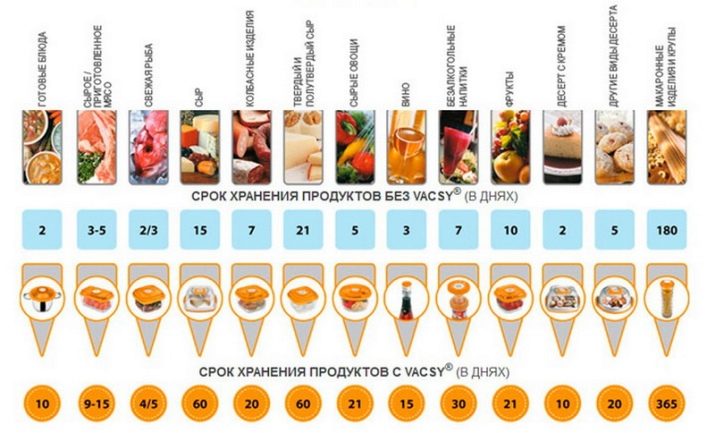
Raw meat and fish
It is better to store them chilled or frozen. This will allow not to lose juiciness. The maximum shelf life on the shelf of the refrigerator is 7 days. In the freezer (in a state of freezing at –18 ° C) this period is extended to one and a half years.
It is worth noting that beef in the airless space may darken. However, this is not a sign of damage.

Vegetables
Some housewives just wash the vegetables before packing. Others carry out preliminary blanching. In other words, vegetables are treated with boiling water before being placed in the bag. This helps to fully preserve the aroma and taste of the products.
Greens should be kept in boiling water for about 2 minutes. Carrots are enough 5-minute processing. Cereals are kept in boiling water for about 10 minutes. Then the vegetables are cooled and dried. After that, they are placed in a bag and sealed.
This method allows you to extend the safety of the contents of the package from 1 to 3 weeks.
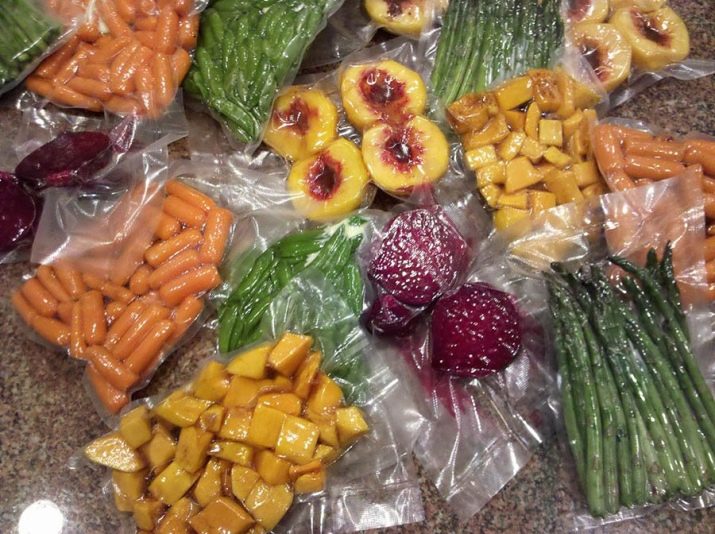
Cheese
If a large piece of cheese is placed in a vacuum, he will keep his usability for up to 40 days. If the bag contains cheese slices, its freshness will remain for 20-25 days.

Bread
Bakery products are placed in a vacuum infrequently. Even items sold in stores in sealed bags contain air inside.
However, if you nevertheless create conditions for absolute tightness for bread, you can keep it fresh for 1 week.
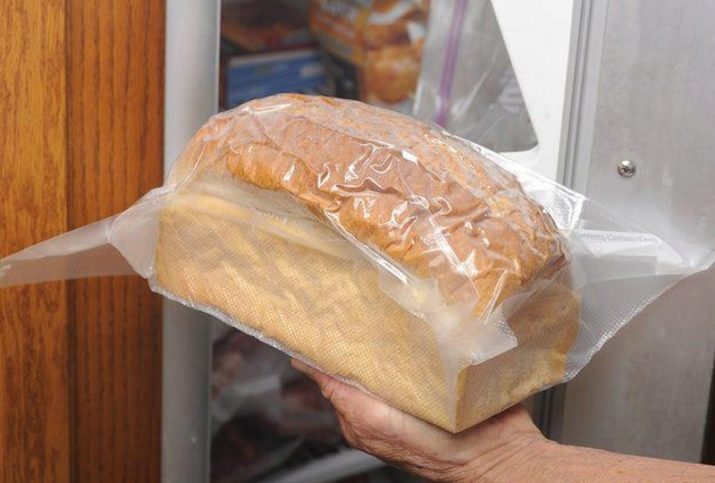
See how to choose the right vacuum bags in the next video.
